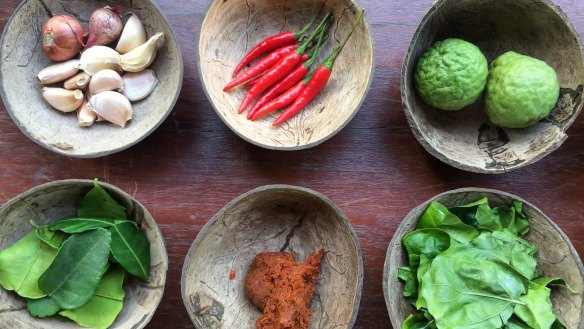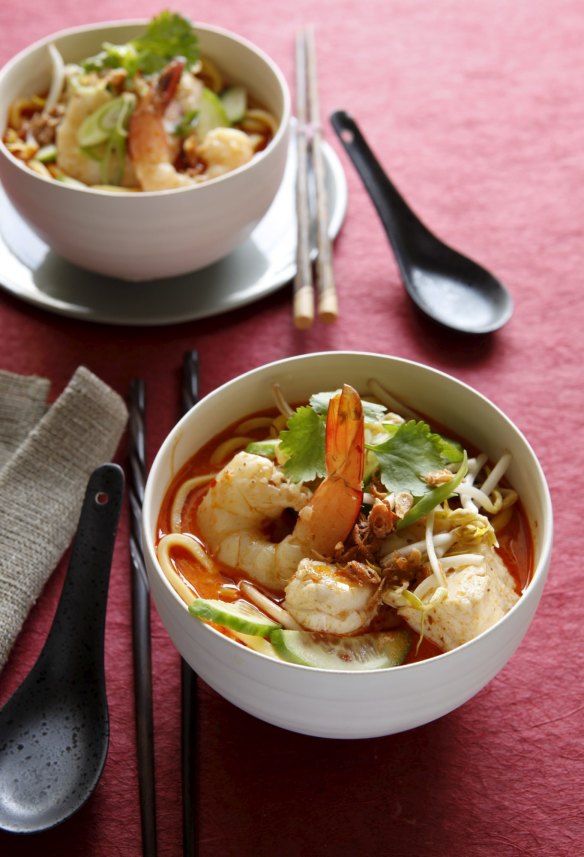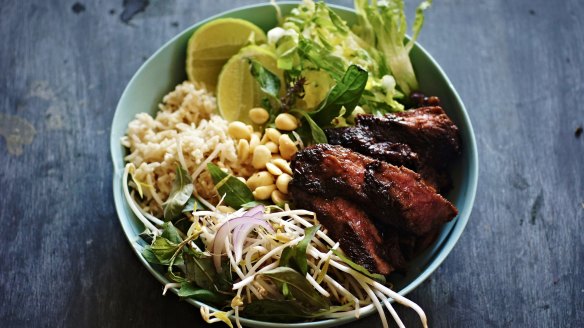Makrut lime: Everything you need to know

A beautifully fragrant lime from southern China and South-East Asia, the fruit's zest and hourglass-shaped leaves contain powerful essential oils that make Thai soups and curries sing and can bring an exotic note to your cooking.
What is it?
Once known as kaffir lime, it is now known by its Thai name, makrut. But in Malaysia, it's called limau purut, in the Philippines it's kulubot and in Vietnam, la chanh.

This wrinkled-skinned citrus is used extensively in kitchens across South-East Asia.
The leaves and skin of the fruit contain sacs filled with essential oils such as citronellal, limonene, pinene and nerol, which have an intense spiced-citrus flavour and aroma that must be released by grating the skin or crushing or chopping the leaves.
What little juice the limes yield is very sour and surprisingly lacking in flavour compared to the leaves and rind.
You can use it to adjust the seasoning in dishes where you need a tangy note. In South-East Asia it is also used to clean and deodorise.
Why do we love it?
Sungeun Mo, the Korean-born head chef of Melbourne restaurant BKK, did not experience makrut lime until she cooked at Red Spice Road in Melbourne.
"I was blown away by the amazing aroma," she says. "It is something that works so well with coriander, chilli and ginger."
She grates the zest into BKK's Thai curries and uses a tiny amount of zest to finish a fish dish.
At iconic Sydney venue Spice I Am, fine slices of the fragrant leaf cut through the rich, sticky and unctuous signature dish of stir-fried pad prik king with crisp pork belly.
Chef Sujet Saenkham, from Ratchaburi province in central Thailand, also uses the leaves to add aromatic highlights to dishes such as chu chee curry, where the freshness of makrut lime leaves balances the decadence of fish sauce.

How do you use it?
Makrut leaves are often paired with ginger, chilli and soy in marinades, such as for beef bowl with coconut rice.
The rich exotic aroma also pairs perfectly with fish and chicken in quick and easy dishes such as prawn and vermicelli salad. Thai soups such as spicy prawn laksa and tom yum also get a lift from the leaves.
Where do you get it?
Whole makrut limes and their leaves are sold in greengrocers, markets and some supermarkets. Look for shiny, deep green fruit and leaves that are glossy, green and unblemished.
Limes and leaves lose their pungency with time but can be kept in the fridge for a week or so. They can also be stored in the freezer for six months without affecting the aroma.
Makrut limes will grow in subtropical, Mediterranean and maritime climates in southern Australia, where they prefer sheltered positions.
Send your culinary conundrums and ingredient suggestions to brainfood@richardcornish.com.au or Twitter and Insta @foodcornish.
Appears in these collections
- More:
- Food
- Brain food
From our partners
Original URL: https://www.brisbanetimes.com.au/goodfood/makrut-lime-everything-you-need-to-know-20220714-h252fe.html
